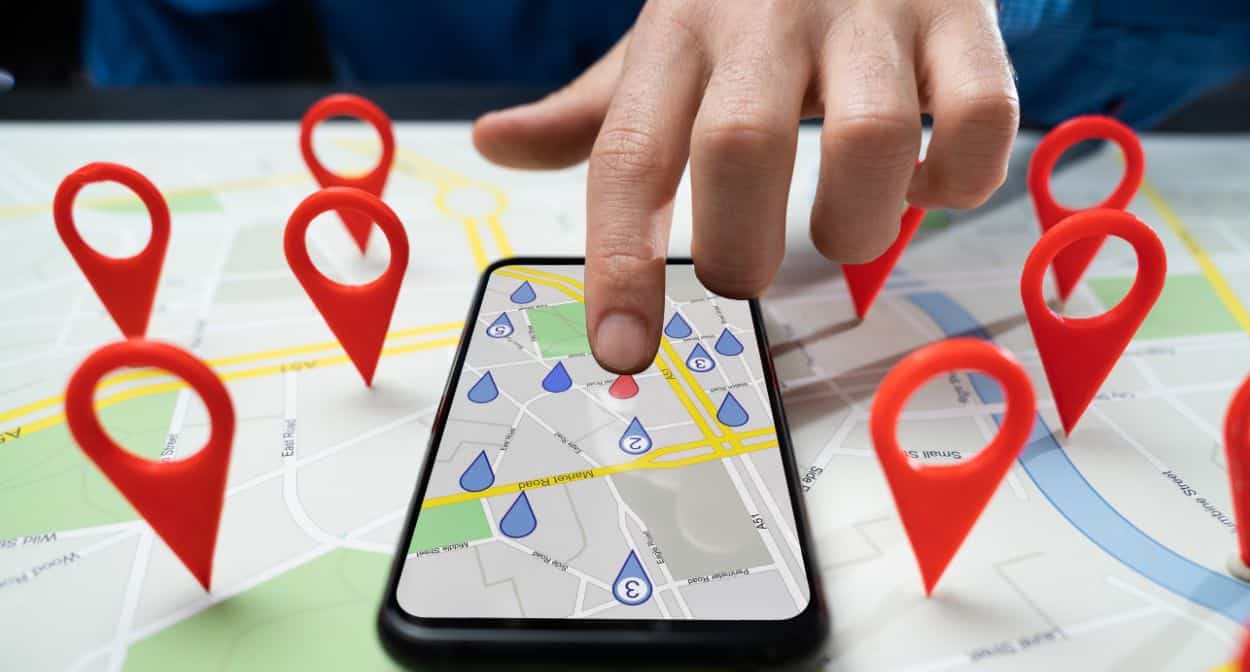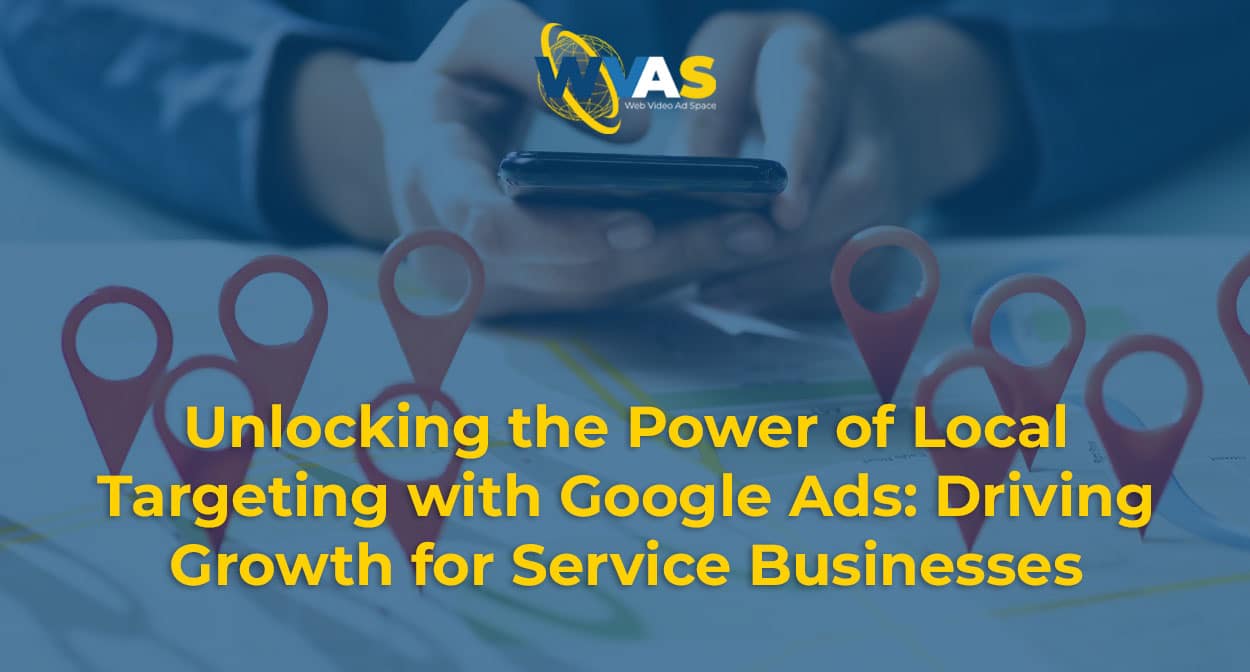Understanding Local Targeting with Google Ads

What is Local Targeting?
Local targeting is an advertising strategy that involves displaying ads to users based on their geographic location. This approach allows businesses to focus their advertising efforts on specific areas where their target audience is most likely to be found. By leveraging local targeting, service businesses can ensure that their ads are shown to potential customers who are nearby and more likely to require their services.
The Importance of Local Targeting for Service Businesses
For service businesses that operate within specific geographic areas, local targeting is a crucial aspect of their advertising strategy. Unlike online businesses that can serve customers worldwide, service businesses often rely on local customers to sustain and grow their operations. By targeting ads to users in their specific location, these businesses can increase the chances of attracting qualified leads and converting them into actual customers.
Real-World Example: A local hair salon in Miami, FL, uses Google Ads’ local targeting options to display ads to users searching for “hair salons near me” or “best hair salon in Miami.” By focusing on its specific geographic area, the salon can attract local customers who are more likely to visit the business in person.
How Google Ads Enables Local Targeting

Proximity Targeting
One of the primary ways Google Ads enables local targeting is through proximity targeting. This feature allows businesses to target ads to users within a certain radius of their business location. By specifying a geographic radius, service businesses can ensure that their ads are shown to potential customers who are close enough to easily visit their establishment.
Real-World Example: A local coffee shop in Seattle, WA, sets up a proximity targeting campaign with a radius of 3 miles around its location. This ensures that the shop’s ads are displayed to users who are searching for “coffee near me” or “best coffee in Seattle” within a 3-mile radius, increasing the likelihood of attracting customers who can conveniently visit the shop.
Location Keyword Targeting
Another way service businesses can leverage local targeting with Google Ads is through location keyword targeting. By including location-specific keywords in their ad campaigns, businesses can reach users who are searching for services in their particular area. This approach helps to ensure that ads are shown to users with a high intent to find local services, increasing the chances of conversion.
Real-World Example: A plumbing company in Chicago, IL, includes keywords such as “plumber in Chicago” and “Chicago plumbing services” in its Google Ads campaigns. By targeting these location-specific keywords, the company can attract users who are actively searching for plumbing services in the Chicago area, increasing the likelihood of generating qualified leads.
Advanced Location Targeting
Google Ads also offers advanced location targeting options that allow service businesses to further refine their local targeting efforts. These options include targeting by city, zip code, or even specific neighborhoods within a city. By utilizing these advanced targeting features, businesses can create highly targeted ad campaigns that reach the most relevant audience in their service areas.
Real-World Example: A pet grooming service in Los Angeles, CA, targets its ads to specific affluent neighborhoods within the city, such as Beverly Hills and Brentwood. By focusing on these high-income areas, the service can attract pet owners who are more likely to invest in premium grooming services for their furry companions.
Strategies for Maximizing the Impact of Local Targeting

1. Creating Location-Specific Ad Copy
Tailoring Ad Copy to Local Audiences
To maximize the impact of local targeting, service businesses should create ad copy that resonates with their local audience. By incorporating location-specific information, such as city names, landmarks, or local events, businesses can create a sense of familiarity and relevance that appeals to users in their target area.
Real-World Example: A dental clinic in Houston, TX, creates ad copy that mentions “Houston’s premier dental services” and includes references to local landmarks, such as “conveniently located near the Houston Museum District.” By tailoring its ad copy to the local audience, the clinic can establish a stronger connection with potential patients in the Houston area.
Highlighting Local Promotions and Offers
Service businesses can also use location-specific ad copy to highlight promotions and offers that are exclusive to their local market. By creating a sense of urgency and exclusivity, businesses can encourage users to take action and visit their establishment.
Real-World Example: A spa in Phoenix, AZ, creates ad copy that promotes a “Summer Relaxation Package” exclusively for Phoenix residents. By emphasizing the local nature of the offer, the spa can attract users who are looking for special deals in their area and drive more foot traffic to its location.
2. Leveraging Local Extensions

Enhancing Ads with Location Information
Google Ads offers a variety of ad extensions that service businesses can use to enhance their local targeting efforts. One of the most effective extensions for local businesses is the location extension, which displays the business’s address, phone number, and directions directly within the ad. By providing users with easy access to location information, businesses can increase the likelihood of users visiting their establishment.
Real-World Example: A fitness center in Boston, MA, uses location extensions in its Google Ads campaigns. When users search for “gyms in Boston,” the fitness center’s ad appears with its address, phone number, and a “Get Directions” link, making it easy for potential customers to find and visit the gym.
Encouraging Local Engagement with Call Extensions
Another valuable ad extension for service businesses is the call extension, which allows users to directly call the business from the ad. By providing a convenient way for users to get in touch, service businesses can encourage local engagement and generate more leads from their target audience.
Real-World Example: A local pizzeria in San Francisco, CA, uses call extensions in its Google Ads campaigns. When users search for “pizza delivery in San Francisco,” the pizzeria’s ad appears with a clickable phone number, allowing hungry customers to place an order directly from the search results page.
3. Monitoring and Optimizing Local Campaigns

Tracking Local Campaign Performance
To ensure the success of their local targeting efforts, service businesses must continually monitor and analyze the performance of their Google Ads campaigns. By tracking key metrics, such as click-through rates, conversion rates, and cost-per-click, businesses can identify areas for improvement and optimize their campaigns accordingly.
Real-World Example: A local auto repair shop in Denver, CO, regularly monitors its Google Ads campaign performance. By analyzing data on which ad groups and keywords are generating the most clicks and conversions, the shop can make informed decisions about how to allocate its advertising budget and refine its targeting strategy.
Adjusting Targeting Based on Insights
As service businesses gather data on their local campaign performance, they can use these insights to make adjustments to their targeting settings. This may involve refining location targeting, modifying keyword lists, or experimenting with different ad formats to find the most effective approach for their local market.
Real-World Example: An HVAC company in Atlanta, GA, notices that its ads are generating a high number of clicks but a low conversion rate for certain neighborhoods within the city. Based on this insight, the company adjusts its targeting settings to focus on the neighborhoods with the highest conversion rates, improving the overall performance of its local campaigns.
Conclusion
Local targeting with Google Ads is a game-changer for service businesses looking to attract customers and grow their presence in specific geographic markets. By leveraging the platform’s proximity targeting, location keyword targeting, and advanced location targeting options, businesses can create highly targeted ad campaigns that reach the most relevant audience in their service areas.
Through real-world examples, we’ve seen how service businesses across various industries can maximize the impact of their local targeting efforts. From a local hair salon in Miami using proximity targeting to reach nearby customers, to a dental clinic in Houston tailoring its ad copy to resonate with the local audience, the possibilities for local targeting are vast and diverse.
By implementing strategies such as creating location-specific ad copy, leveraging local extensions, and continuously monitoring and optimizing their campaigns, service businesses can unlock the full potential of local targeting with Google Ads. As the digital advertising landscape continues to evolve, local targeting remains a powerful tool for service businesses looking to connect with their ideal customers and drive growth in their specific geographic markets.


